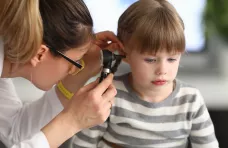2024 results: The International Microbiota Observatory 2nd edition
For the 2nd year running, the Biocodex Microbiota Institute has commissioned Ipsos to carry out a major international survey among 7,500 people in 11 countries. The challenge is to better understand people’s knowledge and behavior towards their microbiota.
This exclusive survey reveals that awareness of the importance of the microbiota for health is slightly growing, but there's still a long way to go...
- 1. A growing but still fragmented knowledge of microbiota
- 2. To maintain a balanced microbiota, people are changing their behaviors!
- 3. Is there a "golden age of microbiota" knowledge?
- 4. Healthcare professionals have a crucial role to play...
- 5. Microbiota worldwide: glaring differences
- Scientific committee
- Methodology
1. Knowledge of the microbiota is growing, but remains fragmented
Only 1 in 5 of those surveyed claimed to know exactly what the term "microbiota" meant.
The gut microbiota remains the best-known microbiota: 26% know exactly what it is. Next come vaginal microbiota (20%), oral microbiota (20%), skin microbiota (17%), and urinary microbiota (16%).
Only 1 in 3 people had ever heard of the term dysbiosis (in other words, a microbiota imbalanced).
how well do we know it?
Only 26% of those surveyed said they knew exactly what the gut microbiota is.
+2 points vs. 2023
Learn more about the gut microbiota...
Only 20% of those surveyed said they knew exactly what the vaginal microbiota is.
+2 points vs. 2023
Learn more about the vaginal microbiota...
Only 20% of those surveyed said they knew exactly what the oral microbiota is.
+3 points vs. 2023
Learn more about the oral microbiota...
Only 17% of those surveyed said they knew exactly what the skin microbiota is.
Learn more about the skin microbiota...
Only 16% of those surveyed said they knew exactly what the urinary microbiota is.
Learn more about the skin microbiota...
Only 34% of those surveyed had ever heard of the term dysbiosis (in other words, a microbiota imbalanced).
Learn more about dysbiosis...
2. To maintain a balanced microbiota, people are starting to change their behaviors!
Appropriate behaviors
More than half the population surveyed (58%) say they have already changed their behavior to protect the balance and proper functioning of their microbiota. But only 17% do so "a lot", and 2 out of 5 say they do so only "a little" (41%).
Diet, physical activity…

A large majority say they eat a balanced and varied diet (84%), engage in physical activity (78%), avoid smoking (76%) or limit processed foods (75%) to limit the risk of microbiota imbalance.
Inappropriate behaviors
59% say they wash several times a day, a practice likely to cause dysbiosis, and 42% of women take vaginal showers, even though this is harmful to their vaginal microbiota.

Have you heard about dysbiosis?
Find out more...
3. A "golden age of microbiota"? Parents and 25–44-year-olds are the most aware, unlike seniors
3 out of 4 parents of children under 3 have heard of the term "microbiota" (vs. 70% overall), such as 78% of 25–34-year-olds and 75% of 35–44-year-olds.
Almost 7 out of 10 parents of young children (68%) said they have modified their behaviors to protect the balance and proper functioning of their microbiota (vs. 58% overall).
Only a third of seniors have received information from their healthcare professional on the microbiota, its role and functions (34%, vs. 45% overall).

Find out more...
What could prevent my child’s respiratory allergies?
4. Healthcare professionals have a crucial role to play in encouraging good behaviors
More than 3 out of 4 respondents consider healthcare professionals to be the 1st most reliable source of information on the microbiota.
However, information provided by professionals only reaches a minority of people.
45% have had explanations of what microbiota is.
More than 9 out of 10 people who repeatedly benefited from information from their healthcare professional had adopted behaviors to maintain a balanced microbiota, compared to 58% among all respondents.
And, only one in three people had been informed by them that taking antibiotics could have negative consequences on the balance of their microbiota.

Antibiotics: their effects on microbiota and our health?
Find out more...
“This second edition shows once again that patients who receive information from healthcare professionals have a healthier approach to their microbiota. What’s more, it triggers virtuous behavioral cycles. So we need to give healthcare professionals more support to fully integrate the microbiota into the patient care pathway.”

5. Microbiota worldwide: glaring differences
-
Vietnamese (92%), French (85%), Chinese (76%), Spanish (76%) and Polish (75%) are the most familiar with the term microbiota, while Americans (62%), Portuguese (62%), Moroccans (59%) and Finns (41%) are the least familiar.
- Mexico, Brazil, China, Vietnam and Poland are the countries where people are most aware of the role and function of microbiota, with the highest adoption of beneficial behaviors.
- Vietnamese (84%), Mexicans (67%), Chinese (62%) and Poles (65%) are the most likely to have modified their behaviors.
Only a third of Finns (36%) have changed their behavior, and very few (20%) have been made aware of the right behaviors to adopt.
Etienne Mercier, Director of the Opinion and Health Division for Ipsos, comments on 2024 results

Scientific committee
In 2024, a multidisciplinary international scientific committee was set up to:
- oversee the 2024 survey’s editorial process (made by Ipsos)
- give a critical analysis about the 2024’s survey & results in his field (gastroenterology, gynecology, diet…) in a scientific article, interview or other publication that could be shared on the Institute’s website and available in 7 languages
- promote and support the International Microbiota Observatory’s roll out on a national level among colleagues, physicians, patients, medical societies…
This scientific committee is made up of:

Hanna Stolińska-Fiedorowicz, PhD
Poland
Clinical dietician, lecturer, graduated from the Medical University of Warsaw.
She worked at the Institute of Food and Nutrition for 7 years.
Check her Linkedin profile here.

Joël Doré, PhD
France
Research Director at INRA & Scientific Director of the MetaGenoPolis.
Check his Linkedin profile here.

Purna C. Kashyap, M.B.B.S.
USA
Gastroenterologist, Mayo Clinic College of Medicine.
Check his Linkedin profile here.

Jean-Marc Bohbot, MD, PhD
France
Andrologist, infectious disease specialist, Institut Alfred Fournier.
Check his Linkedin profile here.
Methodology
This second edition of the International Microbiota Observatory was conducted by Ipsos on 7,500 individuals across 11 countries (France, Spain, Portugal, Poland, Finland, Morocco, the USA, Brazil, Mexico, China, and Vietnam). Four new countries were included in this second edition: Poland, Finland, Morocco, and Vietnam.
The survey was conducted over the Internet between January 26 and February 26, 2024. For each country, the sample is representative of the population aged 18 and over in terms of :
- gender
- age
- profession
- region
Representativeness was ensured via quota sampling, the most commonly used sampling method for obtaining a representative sample of the population studied. The quota variables for each country were gender, age, region, and socio-professional category. The data were adjusted:
- within each country, again to ensure that each population is representative
- globally, so that each country has the same weight. Statistical analyses were carried out using Cosi software (M.L.I., France, 1994), with a significance level of 95%
The survey population was 48% male and 52% female. The average age was 46.1 years. The sample of 7,500 individuals made it possible to carry out a detailed analysis by age group:
- 18-24
- 25-34
- 35-44
- 45-59
- 60 and over
Changes from one year to the next have been measured on a like-for-like basis, i.e. calculated taking into account only those countries present in both the first and second editions of the survey. While we do have results for the new countries included in this second edition (Poland, Finland, Morocco, and Vietnam), they have not been taken into account when calculating trends, since they were not included in the first edition of the survey.
The questionnaire includes 27 questions on:
- socio-demographic data
- the level of knowledge about microbiomes
- the level of and desire for information from healthcare professionals
- the identification and adoption of behaviors designed to combat microbiome imbalances
- the level of knowledge, information, and behaviors of women about the vulvo-vaginal microbiome
- health data
The questionnaire lasted ten minutes and the 7,500 individuals had to complete the entire questionnaire in order to be included in the survey. The terms used in the questionnaire to talk about the microbiome have been translated and adapted to the terms used in each country.




